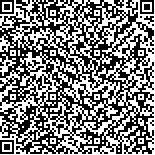谷鹏鹏,陈许艳,徐来,等.分级运动想象联合常规作业治疗对脑卒中后偏瘫患者上肢运动功能的影响[J].中华物理医学与康复杂志,2019,41(2):101-105
扫码阅读全文

|
| 分级运动想象联合常规作业治疗对脑卒中后偏瘫患者上肢运动功能的影响 |
|
| |
| DOI:DOI:10.3760/cma.j.issn.0254-1424.2019.02.005 |
| 中文关键词: 脑卒中 分级运动想象 镜像疗法 运动想象 上肢运动功能 |
| 英文关键词: Stroke Graded motor imagery Mirror therapy Motor imagery Upper extremity function |
| 基金项目:浙江省医药卫生科研项目(2014RCA018) |
|
| 摘要点击次数: 12446 |
| 全文下载次数: 8449 |
| 中文摘要: |
| 目的 观察分级运动想象(GMI)疗法联合常规作业治疗对脑卒中偏瘫患者上肢运动功能的疗效。 方法 将符合入选标准的30例脑卒中后偏瘫患者按随机数字表法分为对照组15例和GMI组15例。对照组患者给予常规药物、常规物理治疗和常规作业治疗(每日1 h),GMI组患者则在对照组常规药物、常规物理治疗方案的基础上,将常规作业治疗由每日1 h降为每日30 min,另增加每日30 min的分级运动想象疗法。于治疗前、治疗4周后(治疗后)分别采用上肢Fugl-Meyer评定量表(FMA-UE)、组块测试(BBT)、上肢和手Brunnstrom分期量表对2组患者的上肢运动功能恢复情况进行评估,同时采用表面肌电图检测2组患者患肘最大等长屈曲、伸展时肱二头肌、肱三头肌积分肌电值,并计算相应的共同收缩率(CR)。 结果 治疗后,2组患者的FMA-UE评分、上肢Brunnstrom分期、手Brunnstrom分期、BBT以及患肘屈曲时肱二头肌CR和患肘伸展时肱三头肌CR与组内治疗前比较,差异均有统计学意义(P<0.01),且GMI组治疗后的FMA-UE评分、上肢Brunnstrom分期、手Brunnstrom分期、BBT以及患肘屈曲时肱二头肌CR和患肘伸展时肱三头肌CR分别为(40.53±5.48)分、(3.67±0.72)分、(3.00±0.54)分、(4.47±1.13)个、(14.97±4.09)%、(29.42±6.04)%,与对照组治疗后比较,差异均有统计学意义(P<0.05)。 结论 分级运动想象疗法联合作业治疗可有效地改善脑卒中患者上肢运动功能。 |
| 英文摘要: |
| Objective To investigate the effect of graded motor imagery (GMI) therapy combined with routine occupational therapy on the recovery of upper extremity function after stroke. Methods Thirty stroke survivors who met inclusion criteria were randomly assigned to a control group (n=15) or a GMI group (n=15). The control group received routine medication, conventional physical therapy and routine occupational therapy (one hour a day), while the GMI group received 30 minutes of routine occupational therapy and 30 minutes of graded motor imagery therapy every day in addition to conventional medication and physical therapy. Before and after four weeks of treatment, the patients in both groups were evaluated using the Fugl-Meyer Assessment for the Upper Extremities (FMA-UE), the Box and Block Test (BBT) and Brunnstrom arm and hand staging. Surface electromyography of the biceps brachii and triceps brachii was performed as the affected elbow flexed and stretched in maximum isometric contractions, and the co-contraction ratios (CRs) were calculated. Results After the treatment, the average FMA-UE score, Brunnstrom arm and hand stage, BBT and CR scores in both groups had improved significantly. The average improvement in the GMI group was significantly greater than in the control group. Conclusions Graded motor imagery therapy can significantly promote motor recovery of the upper extremities of hemiplegic patients after a stroke. |
|
查看全文
查看/发表评论 下载PDF阅读器 |
| 关闭 |